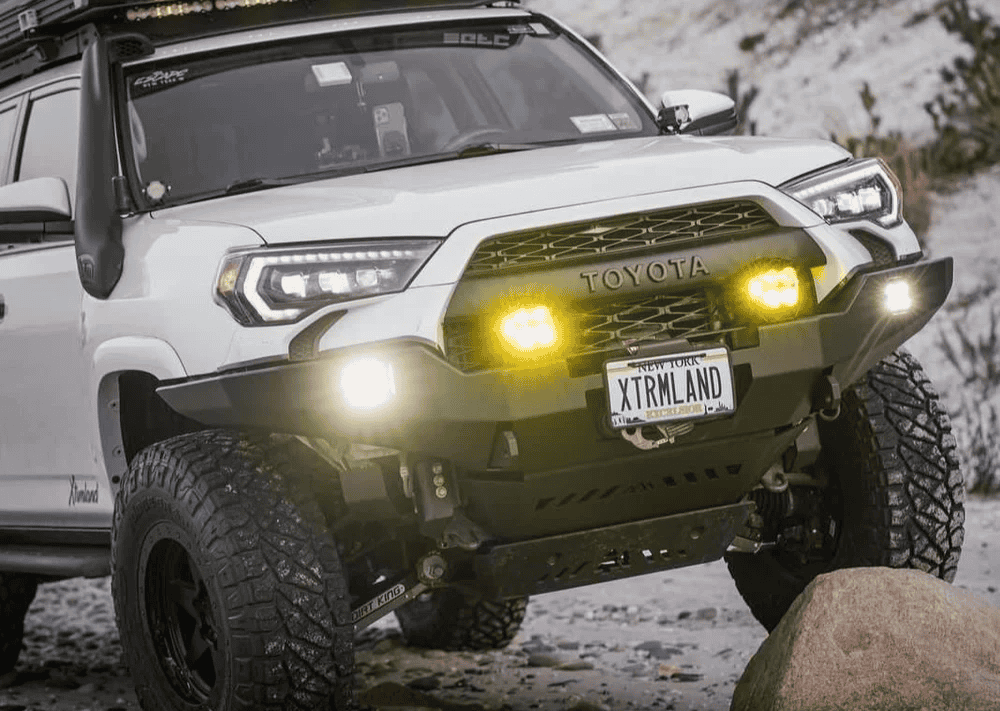Overland Vehicles

Building a Chevy Silverado overland truck begins with the platform. Half ton 1500 models offer comfort, broad parts support, and lighter curb weights that help preserve payload. Three quarter ton 2500HD models add stronger axles, brakes, and frames, which benefits heavy armor and extended travel loads. Wheelbase affects capability and cargo: a shorter wheelbase turns easier on tight trails, while a longer bed improves storage and sleep options. Consider cab style, gear weight, and the terrain you plan to frequent before selecting trim and bed length.
Payload is the backbone of reliability. Weigh your truck at a scale, then calculate remaining capacity after adding passengers, fuel, water, tools, and camp systems. Aim to keep total mass under GVWR. Long wheelbases track well on gravel but can belly out on steep breaks. Shorter setups fit switchbacks and forest gates more easily.
The 5.3 and 6.2 gasoline V8s provide smooth power, while the 3.0 inline six diesel is notable for torque and highway range. Four wheel drive with a low range transfer case is essential for controlled climbs and descents. Factory automatic locking rear differentials can help in slick sections, yet proper tires and throttle control remain the first line of traction.
Skid plate packages, tow hooks, and integrated trailer brake controllers are useful from day one. Heavy duty cooling helps when climbing with added weight. If possible, select larger fuel tanks for fewer stops between towns in the backcountry.
Overland travel rewards balanced, not excessive, modifications. A mild two inch lift with matched shocks can restore ride height and control once armor and cargo are added. Choose E load rated all terrain tires in the 33 to 34 inch range for a good blend of clearance, gearing, and acceleration. Keep wheel offset conservative to reduce scrub radius and steering load. Real recovery points front and rear, plus a protected winch mount, are more valuable than styling upgrades.
Weight changes behavior. Progressive or heavy duty springs and tuned monotube or remote reservoir shocks cope with corrugations and repeated hits. Pair them with quality tires that balance sidewall strength and wet traction. Carry a full size spare and ensure jack, wrench, and tire repair gear match the new wheel and tire package.
Start with front skid protection for the radiator, oil pan, and steering. Add transmission and transfer case plates as needed. Rock sliders prevent rocker damage and double as stable jacking points. A steel rear bumper with integrated recovery eyes cleans up departure angles. Underbody breathers and careful routing of wiring reduce water crossing risk.
Modern trips rely on stable power. A high output alternator, upgraded battery, or a dedicated auxiliary battery supports a fridge, radios, and lighting. Hard mounted scene lights and a focused forward beam help avoid wildlife and obstacles at low speeds. Keep wiring fused, labeled, and serviceable to simplify trail fixes.
The bed is your living room and garage on the road. A shell or canopy keeps gear secure and dry, while a modular rack can carry a rooftop tent or enclosed storage. Drawer systems improve organization but add mass, so weigh them against simple bins and soft bags. Water storage near the cab minimizes polar moments, and a compact, efficient galley shortens setup time at camp.
Plan for fast transitions. A bed platform can leave space for totes beneath and a fridge on a slide. Keep heavy items low and between the axles. Ten to twenty gallons of water is common for weekend to week long trips; use food grade tanks and secure them against movement.
Stay within axle ratings and avoid overloading tires. Regear only if necessary after tire upsizing; monitor transmission temps on long grades. Schedule fluid changes earlier than the owner’s manual suggests when adding significant mass and heat. Frequent torque checks on suspension and rack hardware prevent trail surprises.
Some projects call for expert fabrication and integrated systems. If you want a turnkey Silverado that balances ride, power, storage, and trail safety, partnering with a professional shop will save time and protect your investment. Explore the approach and build pathways on the Overland Rigs page. For tailored layouts, armor, racks, and power systems built around your use case, see our Custom Overland Upfit options. Curious about process, quality standards, and support after delivery? Learn more at Why Choose OZK Customs.
You know how you travel. We know how to translate that into a Chevy Silverado overland truck that drives comfortably on pavement, tracks confidently on dirt, and keeps camp simple. Tell us where you are headed and what you carry, and we will design a system that fits your payload and priorities without excess. Share your timeline and we will dial the parts, fabrication, and handoff so your truck is ready for the next season.
At the shop we plan and execute complete overland upfits on full size trucks, including suspension tuning, armor, racks, lighting, comms, and integrated power systems. We build with serviceability in mind, label every circuit, and test every system before handoff. When you are ready for a cohesive, reliable setup, reach out and we will get your project on the schedule.
Ready to turn your Silverado into a purpose built overland truck? Share your goals and timeline. Our team will map a clear plan, quote accurate parts and labor, and schedule your build so you can hit the dirt with confidence.
ADDRESS:
6159 E Huntsville Rd, Fayetteville, AR 72701
PHONE:
(479) 326-9200
EMAIL:
info@ozkvans.com